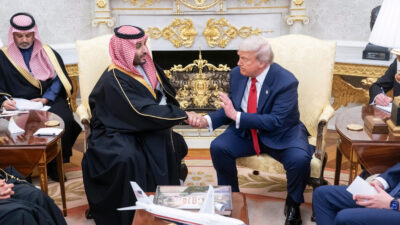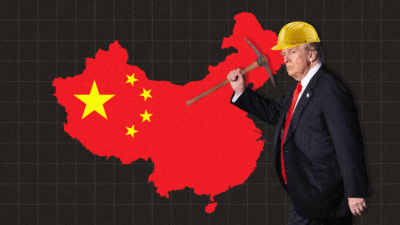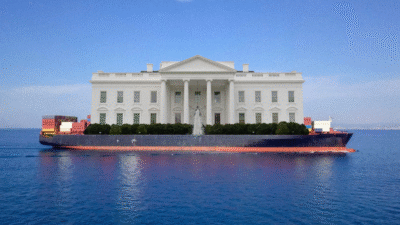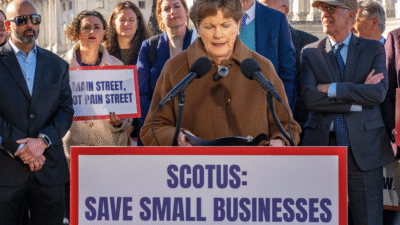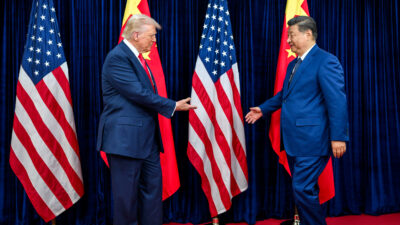US Trade War Saps China’s Economic Momentum
While a trade war bruised the US economy, China isn’t immune to the pain, and its leaders are growing more receptive to negotiation.

Sign up for smart news, insights, and analysis on the biggest financial stories of the day.
At least in the early days, the trade war seems to have no winners.
While the US economy contracted in the first quarter, new economic data this week showed that China — its primary trade war foe — isn’t exactly gaining the upper hand. Which may be why its leaders seem to be, ever so quietly, starting to extend an olive branch.
Look in the Mirror
Through the end of March, China’s economy has looked a bit like a mirror image of the US economy. In the US: A wave of macro uncertainty fueled by the tariff blitz caused the economy to unexpectedly contract 0.3%, according to Bureau of Economic Analysis data reported Wednesday. Conversely, the spike in demand for Chinese-made goods was pretty good for the Middle Kingdom — GDP increased 5.4% in the first quarter, surpassing most expectations. The arrival of 145% import duties on Chinese goods has by now all but emptied out US ports, however, indicating an economic slowdown in China.
The closely watched purchasing managers’ index (PMI), a gauge of factory activity in which any level below 50 signals a contraction, fell to 49 in April, according to China’s National Bureau of Statistics data published Wednesday. That marks the lowest level since December 2023. Meanwhile, a similar gauge measuring export orders fell to its lowest level since December 2022, when the country was slammed by a COVID-19 wave.
Leaders in Beijing have thus far publicly vowed to “fight to the end” in the trade war, and have largely denied any contact so far between the two nations. On Tuesday, the nation’s Foreign Ministry even posted a video on social media titled “Never Kneel Down” that likened the US tariffs to bullying. But recent reporting suggests the country may already be engaging in some quiet trade diplomacy:
- On Thursday, two influential state-affiliated media outlets began reporting that US officials have reached out to Beijing, with one outlet even saying that “there is no harm at this stage for China to engage.”
- The softening of public messaging is mirrored in China’s own trade policies. The country imposed 125% retaliatory tariffs on US goods earlier this month, but, on Wednesday, sources told Reuters that leaders in Beijing have crafted a list exempting some US merchandise — which could signal a willingness to grant some concessions in negotiations.
Mutually Assured Contraction: First-quarter bounce aside, there’s reason for urgency in China. Citing rapidly rising government debt and trade war risks, Fitch earlier this month downgraded China’s sovereign credit rating (as well as the ratings of 38 Chinese central government-owned corporate entities and subsidiaries). Meanwhile, both Goldman Sachs and the International Monetary Fund have reduced GDP forecasts for the country to 4% this year, below China’s own 5% target. Still, that’s better than the outlook for the US, where the IMF cut its 2025 GDP forecast from 2.7% to 1.8% last week— the biggest downgrade of any advanced economy.

